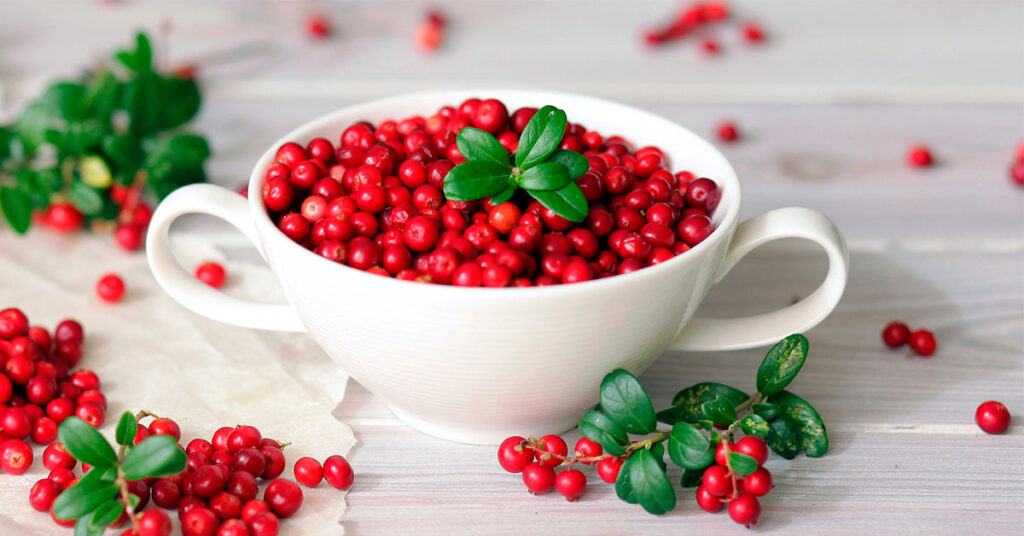

Do you want to see a bear? If so, you can switch on the Discovery Channel, or visit Yellowstone or Glacier national parks. If you live in Alaska, you can just head out the door.
A century ago, if you lived pretty much anywhere in temperate, forested parts of the United States, you’d need only to have made for the nearest cranberry bog to find a bear. Bears revel in the presence of cranberries, seeking them out for a convenient snack and making their dens near supplies of this favorite treat. Hunters knew this, and positioned their blinds accordingly; so did settlers, who took pains to build their cabins as far away from cranberry bogs as they could.
By all rights, cranberries should be called bearberries. Instead, they’re named for another denizen of the bogs-cranes, those graceful, long-necked waterfowl. Some etymologists suggest that the cranberry, originally the “craneberry,” is named not because the bird itself had any special fondness for Vaccinium macrocarpon, but because the plant’s slender pistil suggested the crane’s narrow neck.
The Pilgrims associated the cranberry not with bears or cranes, but Native Americans, and for good reason: the Massapequody people who barely saved their necks that first winter at Plymouth made extensive use of the berry, especially as one of the principal ingredients in pemmican, a mixture of berries, nuts, dried meat (often, in fact, dried bear meat), and tallow. Their kindness and the Pilgrims’ remembrance is what brings cranberry sauce to our tables at Thanksgiving and Christmas dinner.
The Pilgrims followed suit, cultivating the plant in quantity. Wrote one English visitor to the Pilgrim colony in 1639, “The Indians and English use [cranberries] much, boiling them with sugar for sauce to eat with their meat, and it is a delicious sauce.”
The cranberry however, can be a bitter little pill to swallow. Even Henry David Thoreau, who championed its regular consumption, had to admit that the berry took some getting used to. “Perhaps the prettiest berry, certainly the most novel and interesting to me, was the mountain cranberry,” he wrote in his journal of 1860, “We stewed these berries for our breakfast, and thought them the best berry on the mountain, though a little bitterish.”
Those bitterish cranberries are, folk wisdom has it, great tonics for the human urinary tract. (How they influence bears I do not know. The biological literature is full of descriptions of bearish toothaches, ursine teeth evidently being on the delicate side, but it says nothing about the bear’s susceptibility to kidney troubles.) For many years, however, medical doctors scoffed at the notion of drinking cranberry juice as a preventative for urinary tract disorders, ranging from relatively minor discomforts to more serious ailments like kidney stones and interstitial cystitis.
As is so often the case, it now appears that this folk remedy has a solid basis in fact. We now know that plants of the Vaccinium genus‹in North America, the cranberry and blueberry foremost among them contain an enzyme, not yet isolated, that apparently keeps certain kinds of inflammation-inducing acids from bonding to our sensitive plumbing. For good measure, cranberries also contain high concentrations of potassium, phosphorus, iron, and calcium, along with a more modest dosage of vitamin C.
In our national cuisine, cranberries figure prominently in muffins, cakes, and puddings, as a salad topping and, of course, in sauces: jellied, smooth or lumpy, as you prefer. Although you won’t usually see much variation in the sauce from table to table.
Dolly Madison, the wife of President James Madison, was more adventurous still. She served a cranberry sherbet at her husband’s second inauguration that received a laudatory write-up in the National Intelligencer (recipe follows). Less favorably reviewed was her cranberry chutney, with its generous embellishment of green peppers, vinegar, crabapples, cayenne, and lemon juice.
This article has been adapted from New Century Nutrition, a former health internet site and publication developed under the leadership of Dr. T. Colin Campbell.
Copyright 2024 Center for Nutrition Studies. All rights reserved.